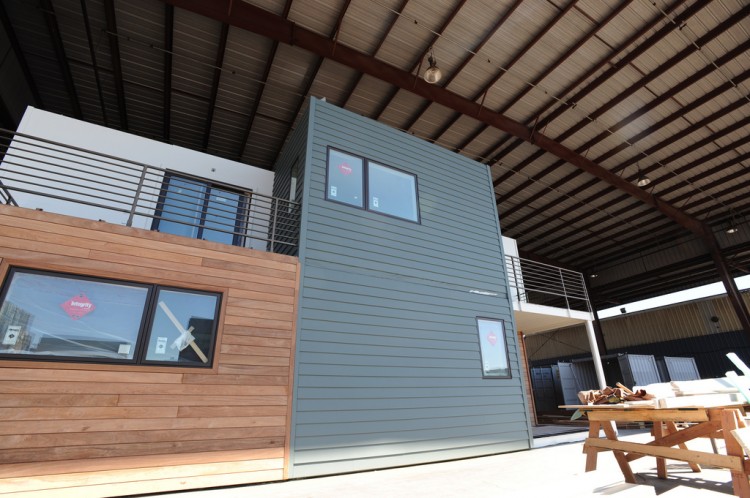As awareness of green technologies is growing and gaining popularity around the world, more and more people are turning to shipping containers as a green alternative. There is a large number of abandoned, unused containers all around the world taking up space on the docks of the world’s ports. The reason for this is the fact that it is much more expensive for countries to dispatch empty containers back to where they came from. In most cases, it’s cheaper to buy new containers from Asia. This results in an unusually large number of empty containers that are just waiting to become someone’s home, office, apartment, school, dorm, studio, etc.

Modular Architecture
Shipping container architecture uses old steel modular containers that transport goods overseas. As these containers are made to withstand much harsher conditions than any other immovable object, architects all over the world use them for their projects. An important advantage of container business is a low cost and high-quality material, wear resistance and the like, and with their use, the project receives the title of sustainable construction.
Advantages of Shipping Containers in Architecture
Strength and durability – Shipping containers are an excellent building material for several reasons. They are designed to carry heavy loads. They can also withstand the harsh environment such as ship decks where they are exposed to salty sea water. They suffer rocking, shaking and abrasion during road transportation, which are far greater challenges for materials and construction than those they can meet if they become a part of an architectural structure.
Modularity – All containers for the transport of goods are made by the same standard measures, so it is possible to combine them into larger modular patterns. When it comes to architecture, this simplifies the construction and design.
Transportation – Property can be taken apart and moved to another location, regardless of whether there’s a structure consisting of just one or dozens of modules.
Availability of materials – These containers are available in all parts of the world. There are many countries whose import of goods is higher than export and containers that arrive are never shipped back because of transport costs.
Price – Price is certainly one of the most important advantages of containers – used goods, which have lost none of its mechanical properties, or a new structure that does not require much funding and expensive materials, etc. Moreover, building process moves quickly, with little labor.

Disadvantages of Shipping Containers in Architecture
Thermal and acoustic insulation – Steel is an excellent conductor of heat and requires more isolation than classical masonry. On the other hand, the container provides excellent tightness, and with good insulation heat loss can be more easily reduced. Sound insulation can be achieved in parallel with the application of heat insulation (mineral wool, polyurethane or polystyrene insulation). To have a normal living space, insulation of shipping containers is basically obligatory.
The workforce – Metalwork is often more demanding than conventional construction and therefore labor is often more expensive when it comes to working with steel structures.
The construction site – Shipping containers, in most cases, need to be moved by trailers, and then set into place with the help of machinery (cranes). Compared to conventional materials, this requires more powerful machinery which adds to the cost.
Construction and use permit – In the world, it is often the case that there are stricter laws and even bans for the construction of residential buildings made of steel. In some areas there’s no legal framework at all.
Wooden flooring in containers – In some cases, when making containers, floors made of wood are treated with various insecticides that contain many harmful elements hazardous to human health. Therefore, these floors need to be removed before the space is allocated to housing, etc.
In many areas, it’s cheaper and consumes less energy to simply use traditional construction methods. Container homes make sense where there are no resources, where containers are abundant, and where people have a vital need for housing (such as developing nations or communities affected by natural disasters). Although they are certainly striking and innovative examples of architecture, they are usually not the best method of design and construction.

